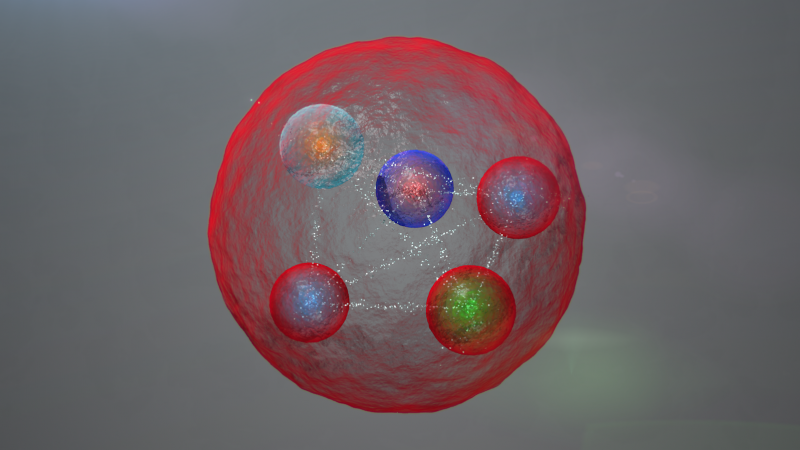FOUND: The Pentaquark, a New Form of Matter

An illustration of a pentaquark (Image: CERN/LHCb collaboration)
Scientists at CERN have announced that, using the Large Hadron Collider, they’ve discovered a new type of particle—the elusive pentaquark.
The pentaquark, which is made of four quarks and an antiquark, was first predicted to exist in the 1960s, when the theory of subatomic physics was just taking shape. But for years, scientists have been unable to find it. It was actually discovered once before, but subsequent studies showed that the signal some scientists thought was the pentaquark was another sort of particle.
This time, though, the scientists at CERN think they’ve got it for real. They were studying the decay of a subatomic particle called a Lambda B baryon, and during the process they observed states that ”must be formed of two up quarks, one down quark, one charm quark and one anti-charm quark.” That’s five quarks—a pentaquark. They hope to publish their results in Physics Review Letters.
What exactly holds these things together? “Studying its properties may allow us to understand better how ordinary matter, the protons and neutrons from which we’re all made, is constituted,” a spokesman for the project said. In other words, the pentaquark could help us understand the very basis of the stuff that makes up the entire world.
Bonus finds: Brightest ever supernova, tyrannosaurus teeth
Every day, we highlight one newly lost or found object, curiosity or wonder. Discover something unusual or amazing? Tell us about it! Send your finds to sarah.laskow@atlasobscura.com.





Follow us on Twitter to get the latest on the world's hidden wonders.
Like us on Facebook to get the latest on the world's hidden wonders.
Follow us on Twitter Like us on Facebook